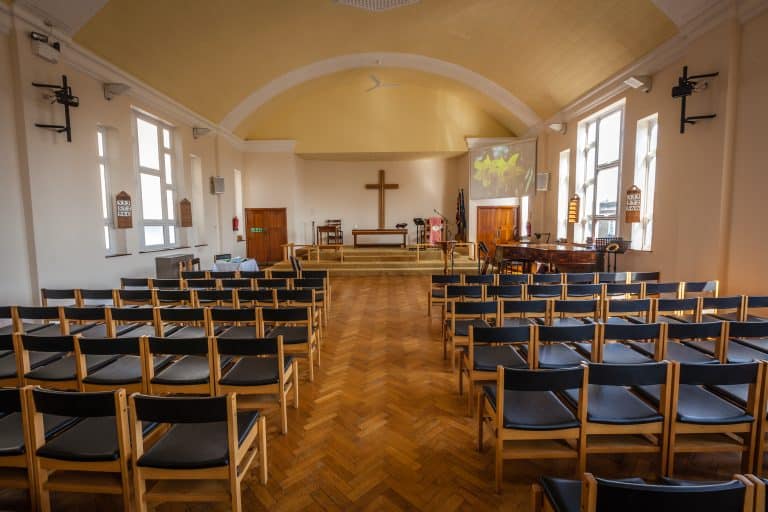What Does Genuine Repentance Look Like?
A Biblical Answer for a Question That Matters
What does genuine repentance look like? It’s a question that cuts deeper than most are willing to go. Because it’s not about feelings. It’s not about checking boxes. It’s not even about how many tears you shed. It’s about the heart. A heart turned—fully and finally—toward the living God.

Scripture does not leave us guessing. But in a world where sin is minimized and confession is redefined as “being authentic,” we need the Word to cut through the noise. We need to know if we’ve truly repented—or if we’re still just sorry we got caught.
So let’s answer this question clearly, biblically, and with the weight it deserves. Because eternal life is not given to the merely remorseful. It’s given to the repentant.
False Repentance: What It Isn’t
Let’s start with what repentance is not.
Repentance is not regret. Judas had that. After betraying Jesus, he felt deep remorse. He tried to undo it. He even gave the money back.
“Then when Judas, who had betrayed Him, saw that He had been condemned, he felt remorse and returned the thirty pieces of silver to the chief priests and elders, saying, ‘I have sinned by betraying innocent blood.’ But they said, ‘What is that to us? You shall see to it yourself!’ And he threw the pieces of silver into the temple sanctuary and left; and he went away and hanged himself.” (Matthew 27:3–5, NASB)
Regret isn’t repentance. It’s just pain without direction. It looks backward but never turns.
Repentance is not fear of consequences. Pharaoh confessed his sin more than once:
“Then Pharaoh sent for Moses and Aaron, and said to them, ‘I have sinned this time; the Lord is the righteous one, and I and my people are the wicked ones.'” (Exodus 9:27, NASB)
But every time the plague lifted, he hardened his heart again. Why? Because he feared the consequences of disobedience—not the holiness of God.
Repentance is not emotional catharsis. Esau wept bitterly:
“For you know that even afterward, when he wanted to inherit the blessing, he was rejected, for he found no place for repentance, though he sought for it with tears.” (Hebrews 12:17, NASB)
It wasn’t the kind of sorrow that leads to life. It was the sorrow of a man who lost something he wanted—not the sorrow of a sinner who had offended a holy God.
This is why 2 Corinthians 7:10 draws a hard line:
“For the sorrow that is according to the will of God produces a repentance without regret, leading to salvation, but the sorrow of the world brings about death.” (NASB)
Worldly sorrow makes you feel bad. Godly sorrow makes you turn.
What Does Genuine Repentance Look Like?
So what does genuine repentance look like? It looks like a change. Not just a shift in behavior—but a reorientation of the entire heart. In Scripture, the word most often used is metanoia—a Greek term meaning “a change of mind.” But it’s not just a thought-level shift. It’s a life-level surrender.
Real repentance isn’t measured in emotion. It’s measured in direction. You were walking toward sin. Now you’re walking toward God. That’s not something you can fake.
David’s repentance in Psalm 51 shows us the anatomy of a broken and contrite heart. He doesn’t blame. He doesn’t excuse. He doesn’t minimize.
“Against You, You only, I have sinned and done what is evil in Your sight, so that You are justified when You speak and blameless when You judge.” (Psalm 51:4, NASB)
This is the posture of genuine repentance. It’s not self-focused. It’s not even outcome-focused. It’s God-focused. The repentant heart grieves not just what sin cost him—but what it cost God.
The Evidence of a Repentant Heart
You don’t earn forgiveness by showing fruit. But the fruit still grows. Jesus said:
“Therefore produce fruit consistent with repentance;” (Luke 3:8a, NASB)
So what does that fruit look like? If you’re asking what does genuine repentance look like in real life, it looks like this: confession without excuse, a hatred of sin, and an ongoing turn toward holiness.
1. Confession Without Excuse
True repentance owns the sin outright. No hedging. No “I was tired” or “you provoked me” or “I didn’t mean to.” A repentant heart says, “This was sin—and I did it.” Full stop.
2. A New Hatred of Sin
Repentance doesn’t just flee the punishment of sin. It begins to hate the sin itself. The things you once justified now make you sick. You see your sin for what it is—an offense against a holy God.
3. Ongoing Turning
Repentance is not a one-time event. It begins at conversion but continues for life. As Martin Luther said, “When our Lord and Master Jesus Christ said, ‘Repent,’ He willed the entire life of believers to be one of repentance.”
That means genuine repentance is both decisive and ongoing. You don’t just turn once. You keep turning. Daily.
4. A Changed Pattern, Not Just a Changed Mood
Real repentance changes more than your emotions. It changes your choices. That doesn’t mean instant perfection. But it does mean visible direction. Over time, the pattern shifts. The appetite weakens. The obedience grows.
5. Reconciliation Where Possible
When repentance is real, it seeks to make things right. Like Zacchaeus, who didn’t just follow Jesus privately—he made public restitution:
“But Zaccheus stopped and said to the Lord, ‘Behold, Lord, half of my possessions I am giving to the poor, and if I have extorted anything from anyone, I am giving it back four times as much.'” (Luke 19:8, NASB)
The fruit of repentance reaches outward. It doesn’t hide behind “that’s under the blood.” It makes things right when it can.
Repentance and Salvation: Not Works, But Evidence
Let’s be clear. Repentance does not earn salvation. But there is no salvation without it. Many profess faith but lack the marks of turning. So again—what does genuine repentance look like? It looks like a Spirit-born change that cannot be faked and will not remain hidden.
Jesus did not come merely to forgive sin—He came to call sinners to repentance:
“I have not come to call the righteous to repentance, but sinners.” (Luke 5:32, NASB)
The gospel is not an invitation to feel bad and try harder. It’s a call to turn from sin and trust in Christ.
This is why Jesus says:
“No, I tell you, but unless you repent, you will all likewise perish.” (Luke 13:3, NASB)
The turning is not a work you do to be saved—it’s the Spirit-wrought evidence that salvation has come. You don’t turn to get grace. You turn because grace has already grabbed your heart.
So What Does Genuine Repentance Look Like?

It looks like sorrow that leads to surrender. It looks like hatred of sin and hunger for holiness. It looks like fruit, not perfection. It’s quiet. It’s steady. And it lasts.
The question isn’t whether you’ve felt bad about sin. The question is: Have you turned?
That turning won’t always feel victorious. Genuine repentance does not mean you’ll never stumble into the sins you once hated. In fact, the deeper your repentance, the more aware you become of the battle still raging within. As J.C. Ryle once said, “True repentance is no light matter. It is a thorough change of heart about sin, a change showing itself in a godly sorrow and humiliation—in heartfelt confession before the throne of grace—in a complete breaking off from sinful habits, and an abiding hatred of all sin.”**
Repentance means direction has changed—even when the struggle continues.
It also means the heart has changed. You are not asking God to polish up the old man. That man died with Christ. Repentance flows from new birth, not self-improvement. Salvation is not about fixing what was broken. It’s about raising what was dead:
“But God, being rich in mercy, because of His great love with which He loved us, even when we were dead in our wrongdoings, made us alive together with Christ (by grace you have been saved),” (Ephesians 2:4–5, NASB)
You have been made alive in Jesus Christ. And the repentance you walk in now is the evidence of that life.
If the answer is no—turn now. Christ stands ready to receive. His blood is sufficient. His grace is free. And He has never turned away a repentant sinner.
If the answer is yes—keep turning. Keep fighting. Keep confessing. Keep believing.
Because repentance isn’t just the doorway to the Christian life. It’s the rhythm of it.
If you’re still asking what does genuine repentance look like in your situation—look to Christ. Look at what He’s turning you from, and what He’s calling you to.
Still struggling with sin? Don’t miss this companion article: Why Do I Keep Sinning?
**J.C. Ryle, Repentance, Banner of Truth edition
Walt Roderick is a Christian writer who cares more about biblical clarity than online applause. He writes to strengthen believers and confront spiritual drift.






